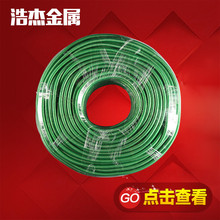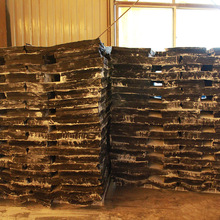您现在的位置是:半岛新闻网 > 资讯
Brilliant Hubble photos show colliding galaxies
半岛新闻网2024-09-22 06:56:25【资讯】9人已围观
简介When galaxies collide, they appear distorted and strange.This week, astronomers working on the NASA
When galaxies collide, they appear distorted and strange.
This week, astronomers working on the NASA and European Space Agency's legendary Hubble Space Telescope posted six images of vivid galactic mergers. You can see them below.
"It is during rare merging events that galaxies undergo dramatic changes in their appearance and in their stellar content," the Hubble program wrote in a statement. "These systems are excellent laboratories to trace the formation of star clusters under extreme physical conditions."
The six collisions shown here are part of the Hubble imaging Probe of Extreme Environments and Clusters survey, or HiPEEC, to better understand star creation in these wild cosmic places.
Remarkably dense clusters of stars form amid these merging galaxies, and they are extremely bright, leaving telltale evidence of long-ago cosmic collisions.
"Even after the collision, when the resulting galactic system begins to fade into a more quiescent phase, these very massive star clusters will shine throughout their host galaxy, as long-lasting witnesses of past merging events," the Hubble astronomers wrote.
 Merged galaxy NGC 3256 is located some 100 million light-years from Earth.Credit: ESA / NASA / HUBBLE
Merged galaxy NGC 3256 is located some 100 million light-years from Earth.Credit: ESA / NASA / HUBBLE The galaxy system NGC 1614 with a variety of spiral arms and a straight tail in the upper right.Credit: NASA / ESA / THE HUBBLE HERITAGE TEAM (STSCI / AURA)-ESA / HUBBLE COLLABORATION) AND A. EVANS (UNIVERSITY OF VIRGINIA, CHARLOTTESVILLE / NRAO / STONY BROOK UNIVERSITY)
The galaxy system NGC 1614 with a variety of spiral arms and a straight tail in the upper right.Credit: NASA / ESA / THE HUBBLE HERITAGE TEAM (STSCI / AURA)-ESA / HUBBLE COLLABORATION) AND A. EVANS (UNIVERSITY OF VIRGINIA, CHARLOTTESVILLE / NRAO / STONY BROOK UNIVERSITY) The "Medusa merger," the result of a larger galaxy consuming a smaller galaxy (aka NGC 4194).Credit: ESA / Hubble / NASA / A. Adamo
The "Medusa merger," the result of a larger galaxy consuming a smaller galaxy (aka NGC 4194).Credit: ESA / Hubble / NASA / A. Adamo The galaxies IC 694 and NGC 3690 passed closely some 700 million years ago, resulting in "a fierce burst of star formation," according to NASA and the ESA.Credit: NASA / ESA / THE HUBBLE HERITAGE TEAM (STSCI / AURA)-ESA / HUBBLE COLLABORATION) AND A. EVANS (UNIVERSITY OF VIRGINIA, CHARLOTTESVILLE / NRAO / STONY BROOK UNIVERSITY)
The galaxies IC 694 and NGC 3690 passed closely some 700 million years ago, resulting in "a fierce burst of star formation," according to NASA and the ESA.Credit: NASA / ESA / THE HUBBLE HERITAGE TEAM (STSCI / AURA)-ESA / HUBBLE COLLABORATION) AND A. EVANS (UNIVERSITY OF VIRGINIA, CHARLOTTESVILLE / NRAO / STONY BROOK UNIVERSITY) Located some 230 million light years away, NGC 6052 is a pair of colliding galaxies, says NASA.Credit: ESA / Hubble / NASA / A. Adamo et al.
Located some 230 million light years away, NGC 6052 is a pair of colliding galaxies, says NASA.Credit: ESA / Hubble / NASA / A. Adamo et al. Galaxy NGC 34 , the result of two colliding galaxies a few million years ago.Credit: ESA / Hubble / NASA, / A. Adamo et al.
Galaxy NGC 34 , the result of two colliding galaxies a few million years ago.Credit: ESA / Hubble / NASA, / A. Adamo et al.
很赞哦!(35391)
相关文章
- How much will PCB's Champions Cup mentors be paid?
- Today in conservative media: Tax cuts for the rich are a moral necessity.
- The weirdest things Russian trolls did to swing the 2016 election
- Books to give activists as they prepare for the upcoming election
- Scientists detect water sloshing on Mars. There could be a lot.
- Haaland set for German Cup final return
- 商标精准扶贫 助推农民增收
- 商标精准扶贫 助推农民增收
- Understanding Relational vs. Non
- PSG squeeze into French Cup final on penalties
热门文章
站长推荐

Apple Watch bands: 5 favorites to consider as Apple Watch 10 looms

President Trump reportedly keeps pressing Senate Republicans to end Russia investigation.

Why North Korea replaced its ambassador to China after 11 years

Nadal off to winning start in 10th Italian Open title bid

To Russia, with Love

Today in conservative media: All eyes on the Supreme Court and Masterpiece Cakeshop

Ending the state

Don't freak out about the latest scary screen time study